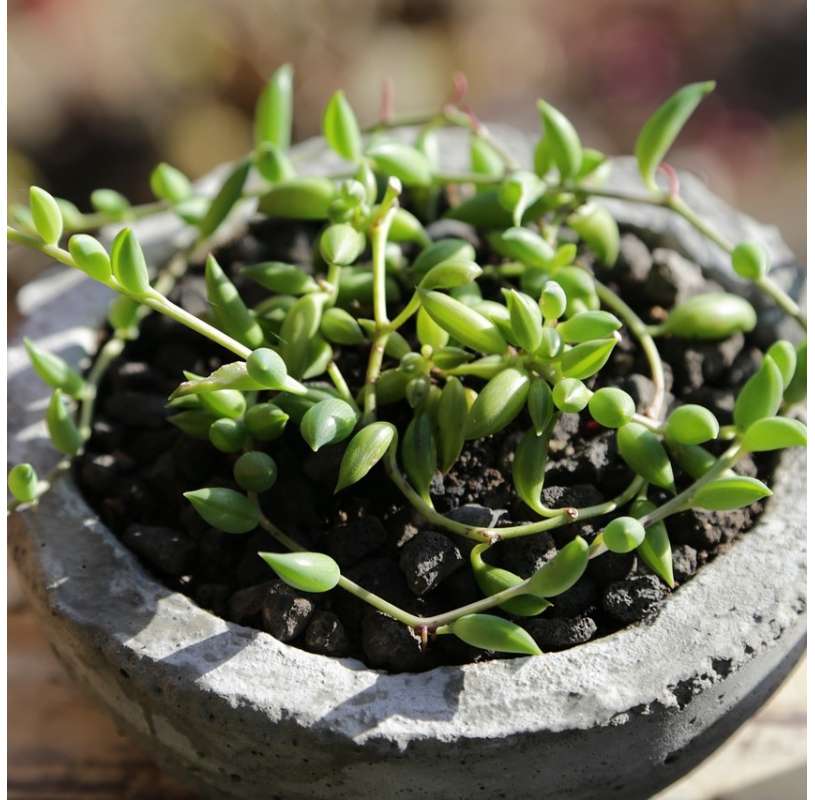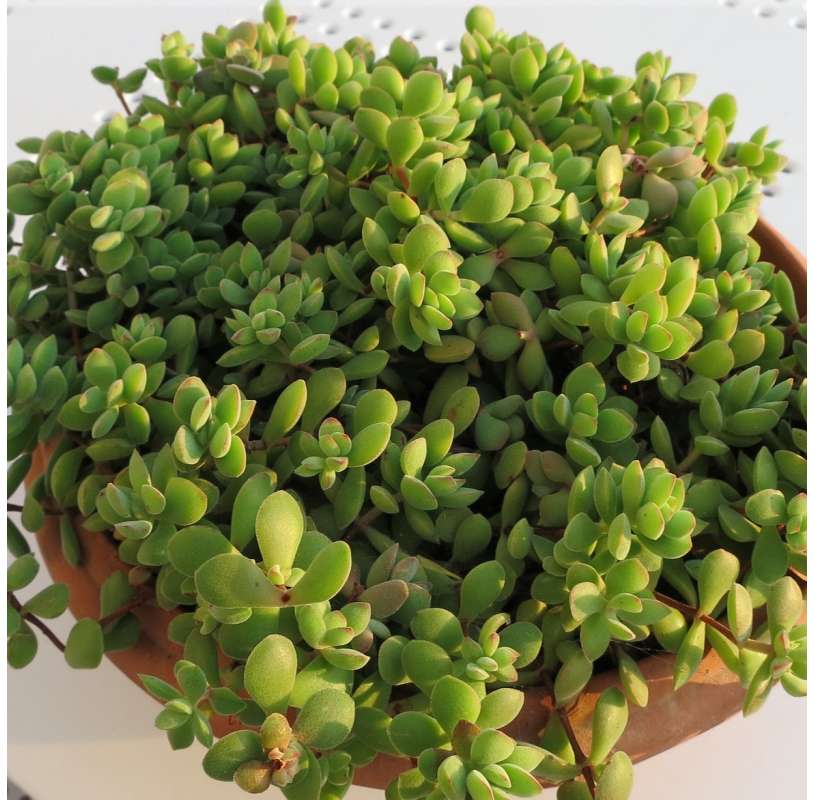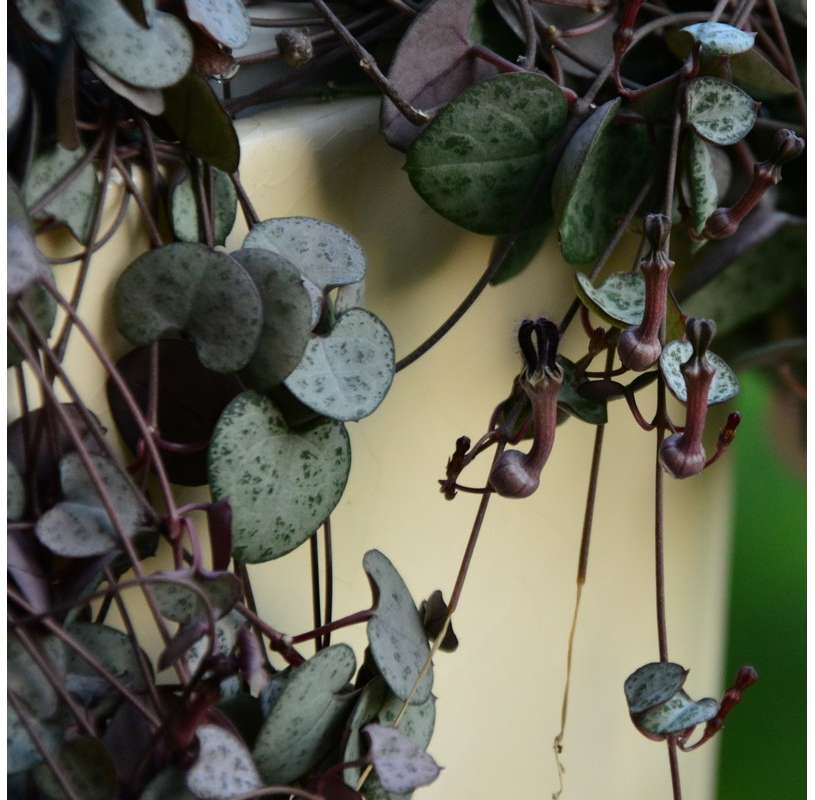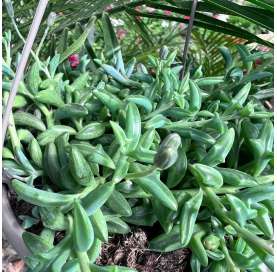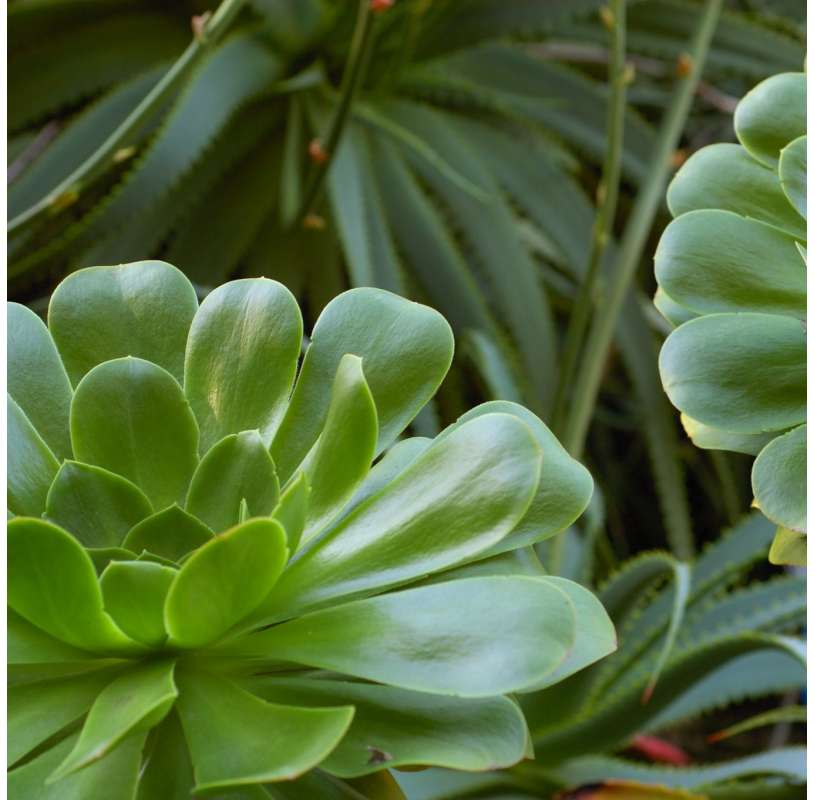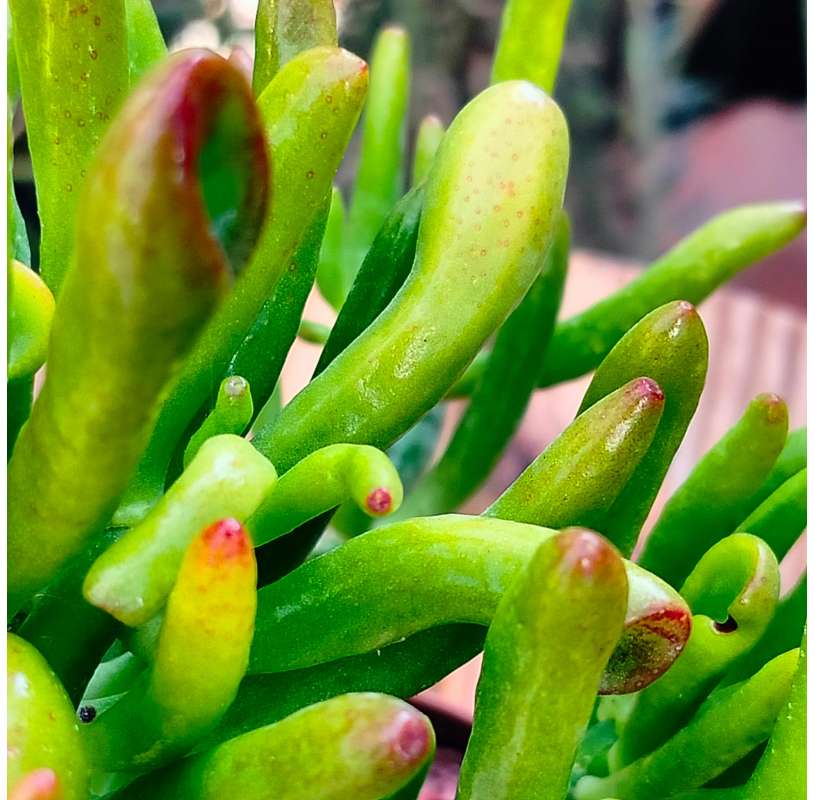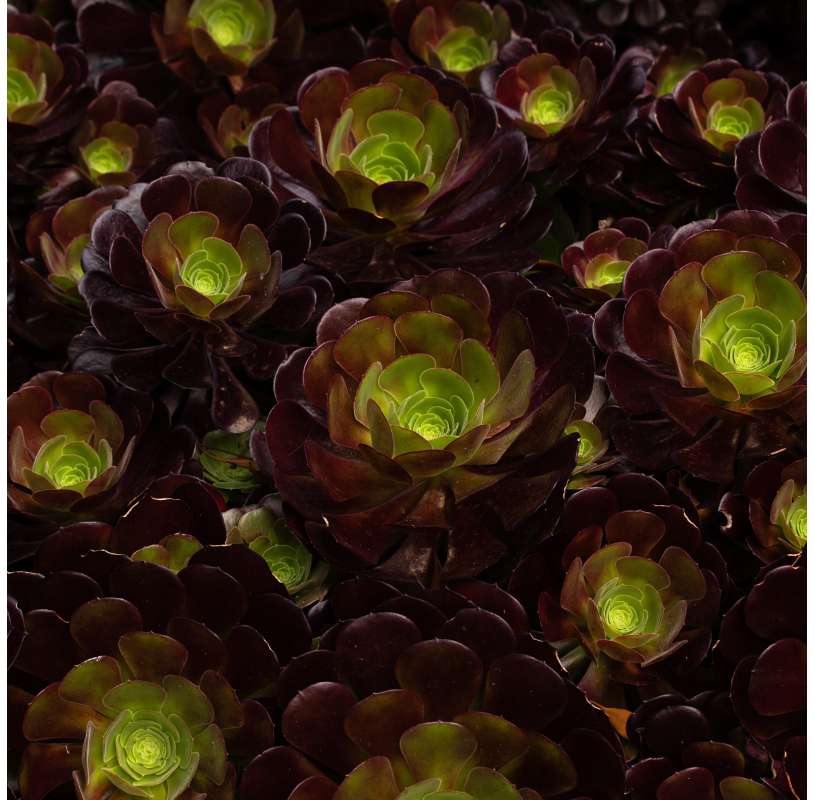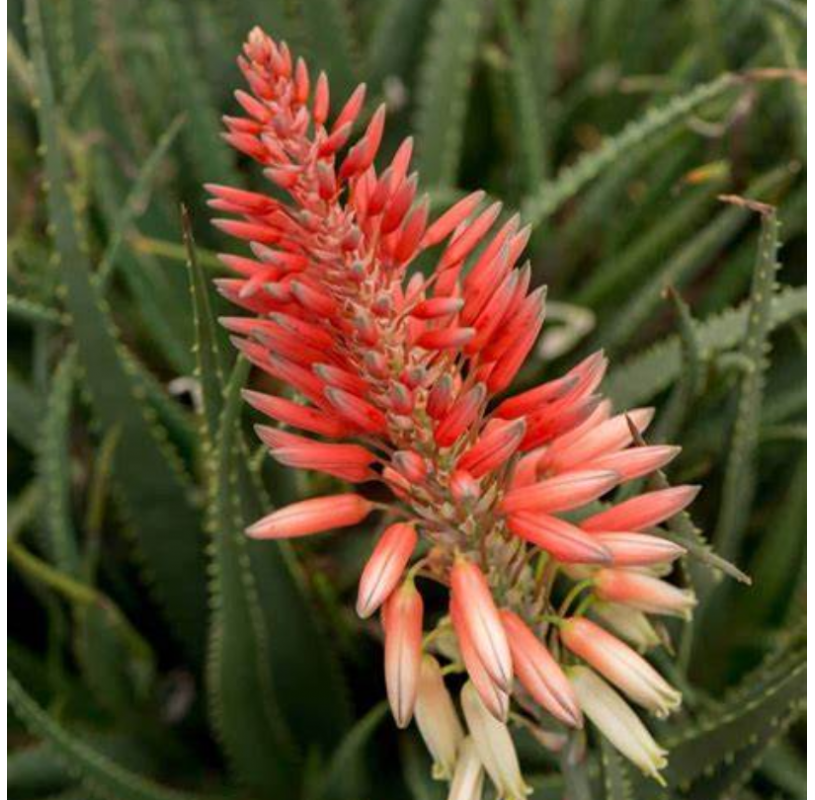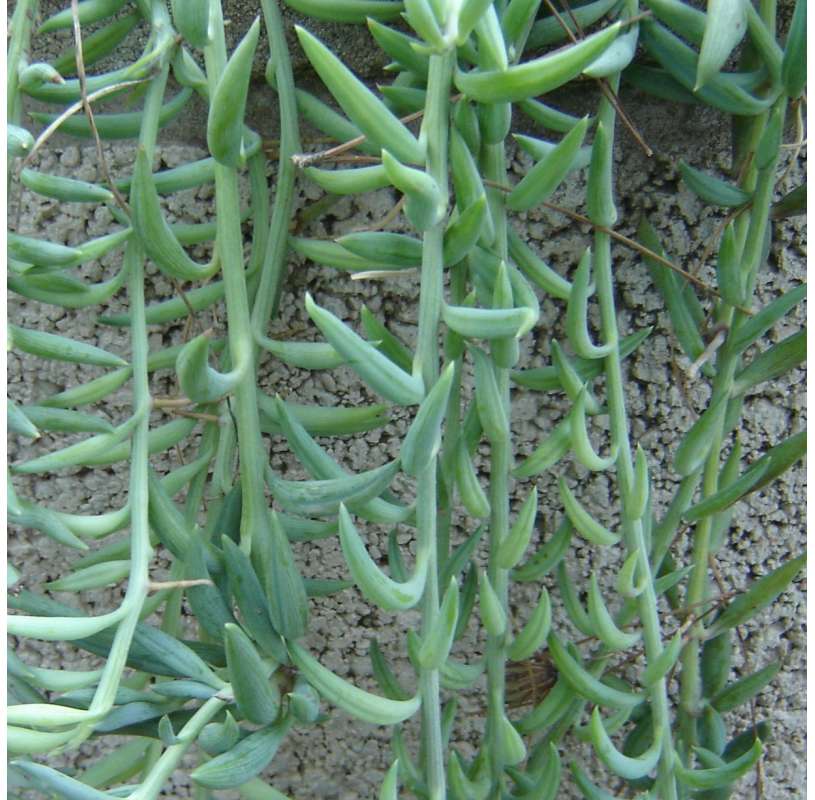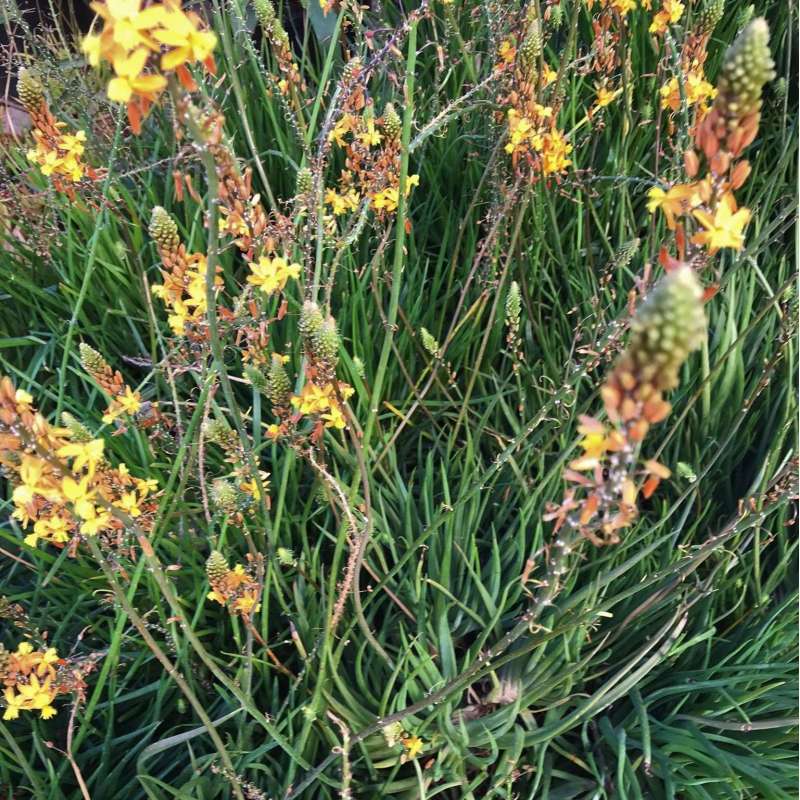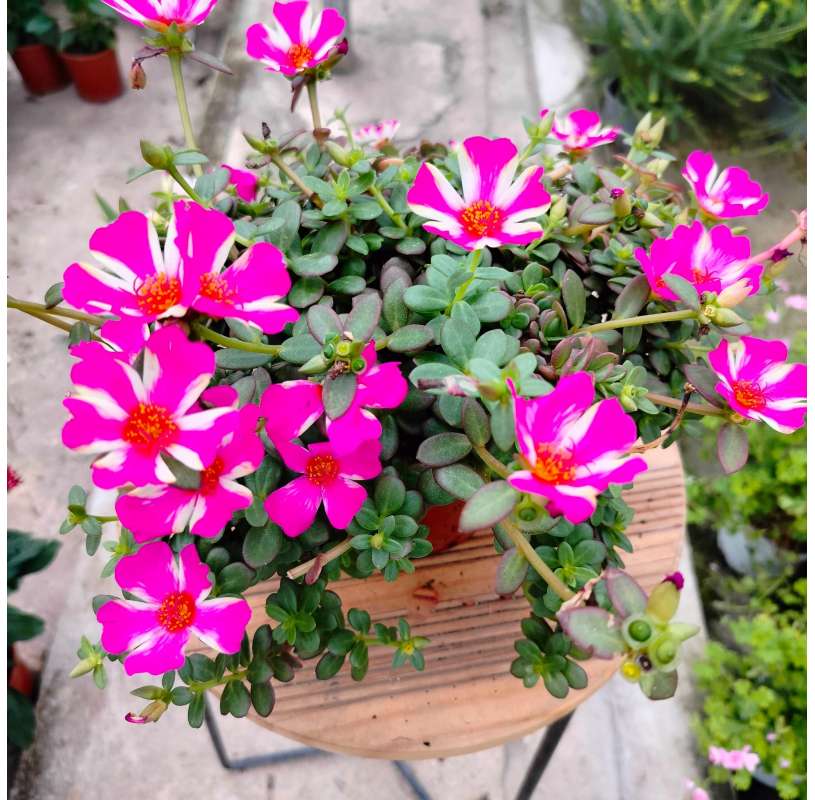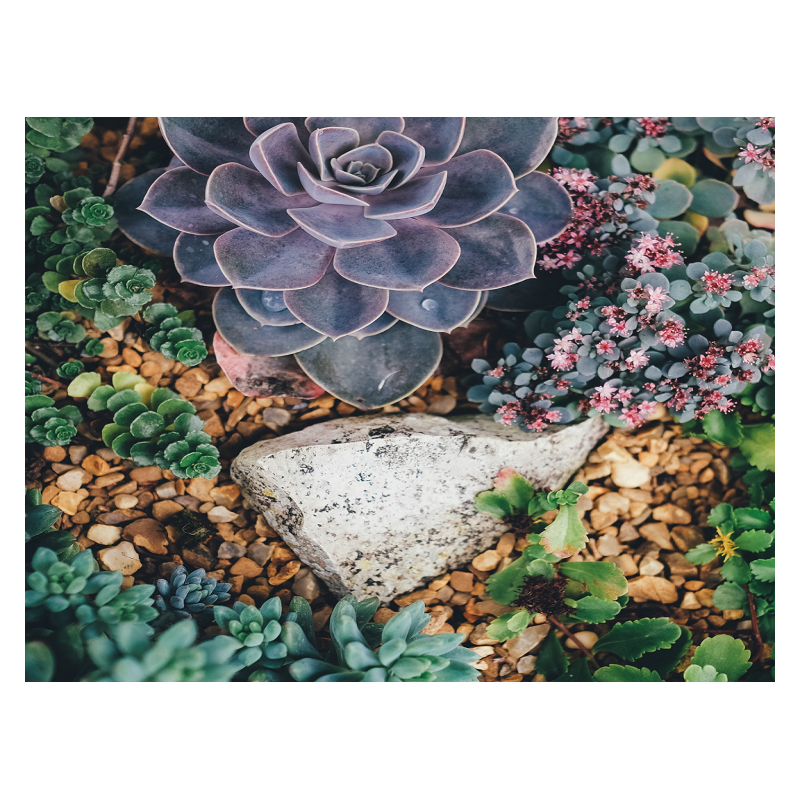
Succulents & Cacti
-
Senecio Herraianus
€6.90Senecio herraianus, commonly known as "String of Tears" or "Collar of Beads," is a succulent plant belonging to the Asteraceae family. This species is native to South Africa and has become a favorite among succulent enthusiasts due to its unique and attractive appearance. Its scientific name, "herraianus," is a tribute to the German botanist H.A. Herra.
-
Senecio Herraianus
€6.90Senecio herraianus, commonly known as "String of Tears" or "Collar of Beads," is a succulent plant belonging to the Asteraceae family.
-
Crassula lanuginosa...
€2.90 -
Ceropegia woodii. Necklace...
€9.90Ceropegia Woodii also known as rosary of hearts, necklace of hearts... is a very hardy, low-maintenance hanging climber.
 Click for getting nice ideas with Ceropegia.
Click for getting nice ideas with Ceropegia. -
Senecio peregrinus
€6.90The senecio peregrinus also known as the senecio delphinus or dolphin plant.
It is a hanging succulent.
-
Aeonium arboreum.
€12.50This variety of Aeonium is particularly decorative because of its glaucous green rosette.
-
Crassula Ovata Hobbit...
€5.10Crassula ovata hobbit, belongs to the crassulaceae family and is a slow-growing evergreen.
-
Aeonium arboreum...
€4.30Aeonium arboreum belongs to the genus Aeonium of the Crassulaceae family and consists of about 40 species from the Canary Islands, Ethiopia and the Arabian Peninsula.
-
Aloe safari
€35.90Aloe Vera is a crasa plant, resistant to periods of sequence and with many beneficial qualities for health.
-
-
-
Portulaca oleracea -...
€2.90Portulaca oleracea is an annual succulent plant of the Portulacaceae family, known for its medicinal properties and as an edible plant.
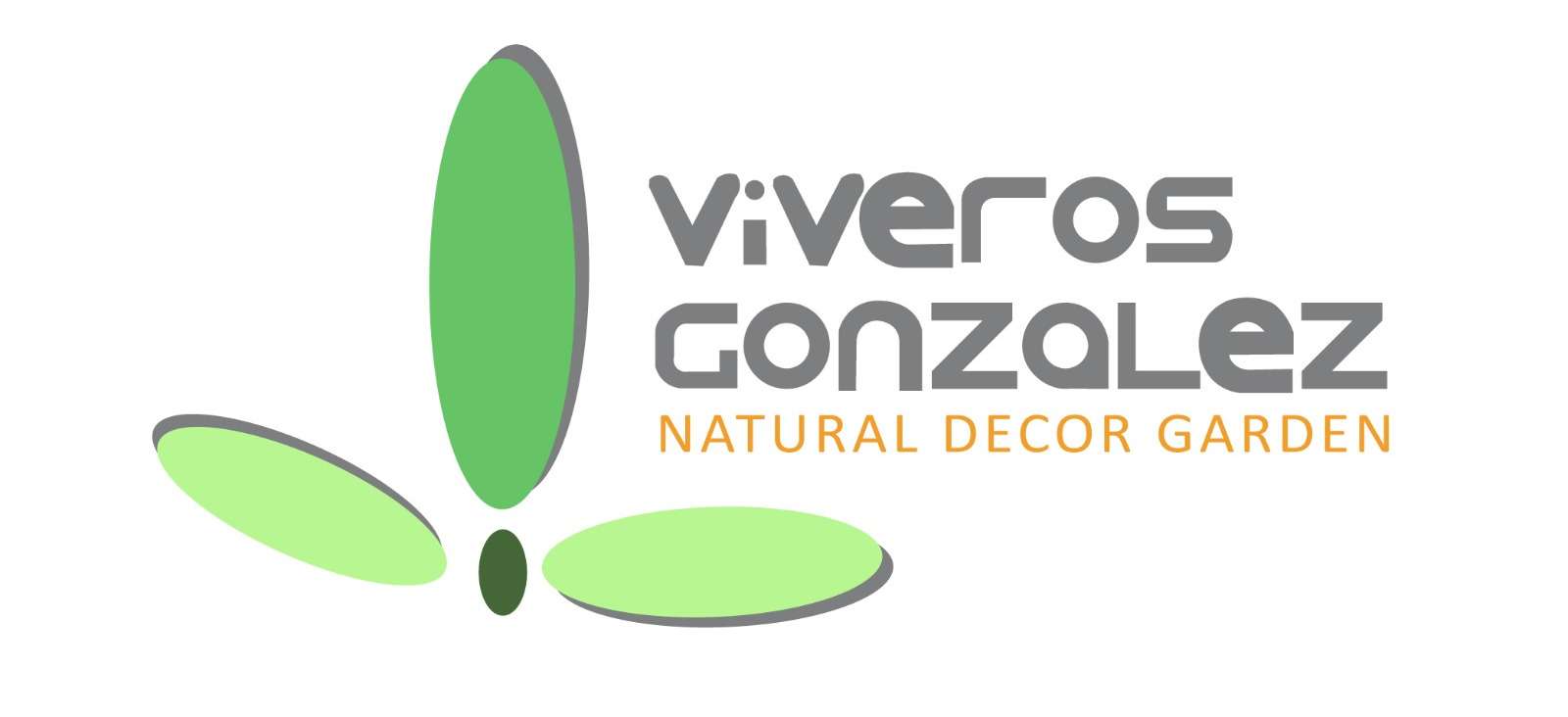
 English
English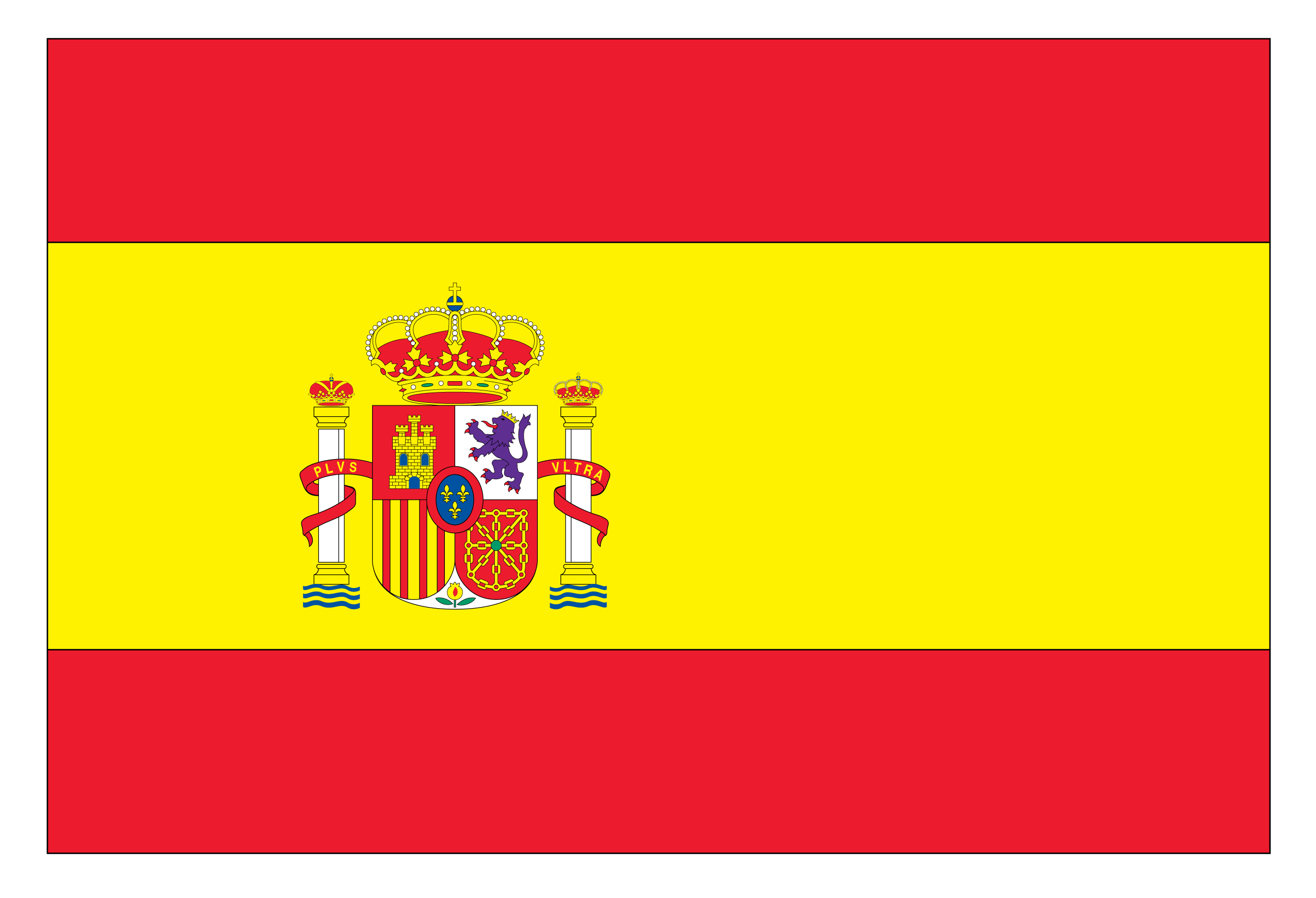 Spanish
Spanish